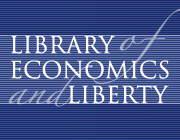
Franco Modigliani |

The second contribution that helped Modigliani win the Nobel Prize was the famous Modigliani-Miller theorem in corporate finance (see Corporate Debt). Modigliani, together with Merton Miller, showed that under certain assumptions, the value of a firm is independent of its ratio of debt-to-equity. Although Modigliani claims his two articles with Miller were written tongue-in-cheek, that is not how Miller, the Nobel Prize Committee, or financial economists took their two articles. Their insight was a cornerstone in the field of corporate finance.
Modigliani also wrote one of the articles that started the rational expectations school of economics (see Rational Expectations). In a 1954 article he and coauthor Emile Grumburg pointed out that people may anticipate certain government policies and act accordingly. Modigliani strenuously objects, though, to how far the rational expectations school has run with this basic insight.
Modigliani considers himself a Keynesian. A cartoon on his office door in 1982 said: "With your permission, gentlemen, I'd like to offer a kind word on behalf of John Maynard Keynes." Modigliani left fascist Italy in 1939, because he was both Jewish and antifascist. He earned his Ph.D. from the New School of Social Research in 1944. Modigliani taught at the New School from 1944 to 1949 and was a research consultant to the Cowles Commission at the University of Chicago from 1949 to 1952. He was a professor at Carnegie Institute of Technology from 1952 to 1960, at Northwestern University from 1960 to 1962, and at MIT from 1962 to the present. He was president of the American Economic Association in 1976.
(With Merton Miller.) "Corporate Income Taxes and the Cost of Capital." American Economic Review 53 (June 1963): 433-43.
(With Merton Miller.) "The Cost of Capital, Corporation Finance, and the Theory of Investment." American Economic Review 48 (June 1958): 261-97.
"Fluctuations in the Saving-Income Ratio: A Problem in Economic Forecasting." In Studies in Income and Wealth, no. 11. 1949.
(With Albert Ando.) "The Life Cycle Hypothesis of Saving: Aggregate Implications and Tests." American Economic Review 53 (March 1963): 55-84.
(With Emile Grumburg.) "The Predictability of Social Events." Journal of Political Economy 62 (December 1954): 465-78.
(With Richard Brumberg.) "Utility Analysis and the Consumption Function." In Post-Keynesian Economics, edited by Kenneth Kurihara. 1954.
